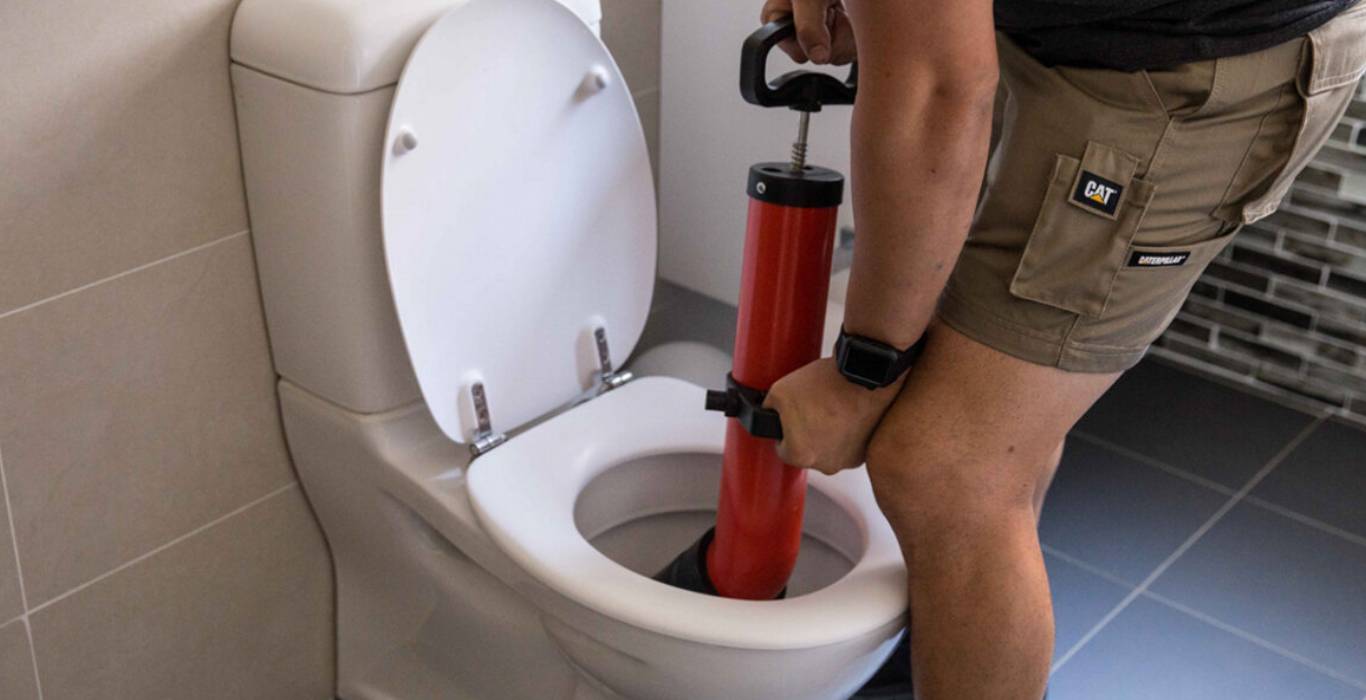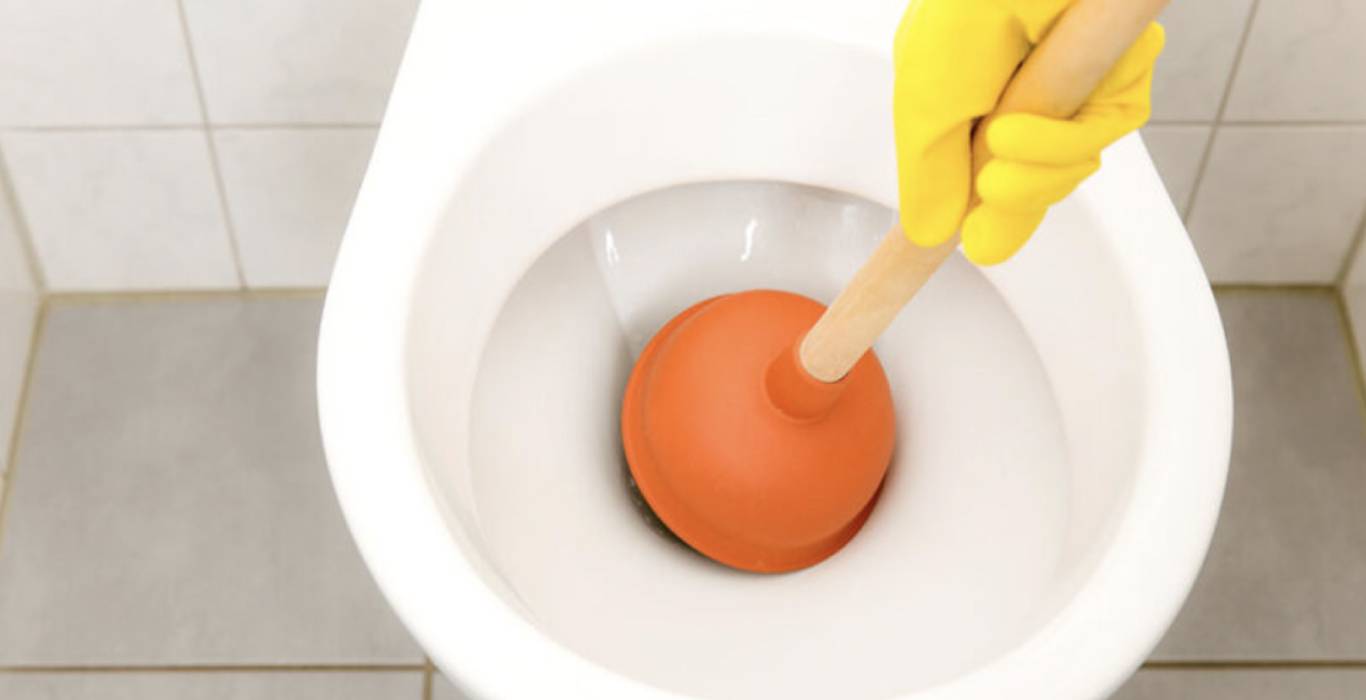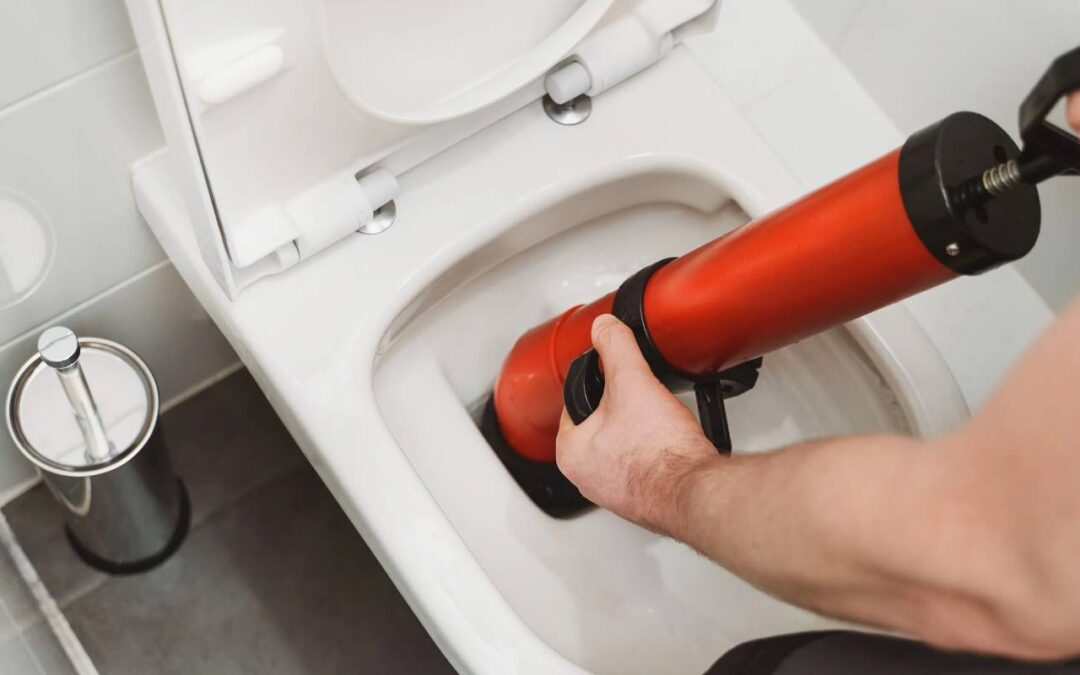What Blocks a Toilet
Blocked toilets can be such a nuisance. They will result in foul smells, backflow of sewage water, foul water pools, and other unpleasant consequences. Several everyday items or situations can block a toilet and cause it to become clogged. Here are some examples:
- Toilet Paper: Excessive amounts of toilet paper, especially if flushed all at once, can block the toilet drain. Thick or non-disintegrating toilet paper may also contribute to clogs.
- Foreign Objects: Items not intended to be flushed, such as paper towels, sanitary products, cotton balls, wipes, dental floss, or toys, can obstruct the toilet’s plumbing.
- Excessive Waste: Flushing large amounts of solid waste at once can overwhelm the toilet’s drainage capacity and result in a clog.
- Hardened Substances: Over time, minerals, calcium deposits, or hard water residue can accumulate inside the plumbing pipes, reducing their diameter and causing blockages.
- Tree Roots: In some cases, tree roots can grow into the sewer line, causing a blockage and preventing proper toilet drainage.
- Plumbing Issues: Damaged or misaligned pipes, plumbing vents, or improper slopes in the drain pipe can impede water flow and lead to toilet blockages.
Here are five standard methods for unblocking toilets:
- Plunger
- Toilet Auger or Snake
- Hot Water and Dish Soap
- Baking Soda and Vinegar
- Enzyme-Based Cleaners
How to Unblock the Toilet with a Plunger
To unblock a toilet using a plunger, follow these steps:
- Ensure Safety: Wear rubber gloves to protect your hands from any potential mess or bacteria.
- Position the Plunger: Place the plunger into the toilet bowl, ensuring that the suction cup covers the drain opening at the bottom.
- Create a Seal: Press the plunger down firmly to create a tight seal between the plunger and the drain. The plunger’s cup should be fully submerged in water, covering the suction cup.
- Plunge Up and Down: Push the plunger down gently and then pull it back up with force quickly and vigorously. Repeat this plunging action several times, maintaining a good seal with the drain. The pressure created by the plunging action can help dislodge the blockage.
- Check for Drainage: After plunging, remove the plunger and check if the water drains freely. If the water level goes down, the blockage has been cleared. If not, continue plunging for a few more attempts.
- Test Flush: Once the water drains freely, flush the toilet to ensure proper drainage and to confirm that the blockage has been completely cleared. If the water flushes smoothly, your job is done!
- Clean Up: After successfully unclogging the toilet, clean the plunger and surrounding area with disinfectant to maintain hygiene. Dispose of any waste materials properly.
If the plunger method does not resolve the blockage, you may need to try other techniques or seek professional plumbing assistance.

How to Unblock a Toilet with Toilet Auger or Snake
Unblocking a toilet using a toilet auger or snake can be carried out by following the steps below:
- Put on Protective Gear: Wear rubber gloves and possibly safety goggles to protect yourself from any potential splashes or debris.
- Prepare the Auger: Extend the toilet auger fully so that you have enough length to reach the blockage. Make sure the handle is securely attached.
- Insert the Auger: Carefully insert the end of the auger into the toilet bowl, positioning it to enter the drain hole at the bottom. Gently push the auger down, feeding it into the drain.
- Rotate the Auger: Start rotating the handle clockwise once the auger is inserted. The snake-like end of the auger will begin to work its way through the blockage, either breaking it up or catching onto it.
- Apply Pressure and Twist: Gradually apply gentle downward pressure as you rotate the auger. This will help the auger make its way through the blockage more effectively. Continue twisting and pushing until the resistance reduces or the auger breaks through the obstruction.
- Retract the Auger: Slowly pull back the auger by turning the handle counterclockwise. Be cautious and take your time to prevent any splashing or dislodging of the blockage.
- Check for Drainage: After retracting the auger, check if the water drains freely. If the water level goes down, the blockage has been cleared. If not, you may need to repeat the process several times.
- Test Flush: Flush the toilet to ensure proper drainage and confirm that the blockage has been completely cleared. If the water flushes smoothly, the blockage has been successfully removed.
- Clean Up: Clean the toilet auger thoroughly, ensuring it’s free from debris or residue. Dispose of any waste materials properly and sanitise the surrounding area.
How to Unblock a Toilet with Hot Water and Dish Soap
To unblock a toilet using hot water and dish soap, follow these steps:
- Gather Supplies: Collect a bucket or container holding hot water, rubber gloves, and liquid dish soap.
- Protect Yourself: Use rubber gloves to protect your hands during the process.
- Heat Water: Heat a large pot or kettle until it’s hot but not boiling. Boiling water can crack the toilet bowl, so avoiding boiling water is essential.
- Add Dish Soap: Squirt a generous amount of liquid dish soap into the toilet bowl. The dish soap acts as a lubricant and can help break down certain types of blockages.
- Pour Hot Water: Carefully pour the hot water into the toilet bowl from waist height. The force and heat of the water can help dislodge the blockage and break it down. Pour the water into a steady stream, aiming for the centre of the bowl.
- Wait and Repeat: Allow the hot water and dish soap mixture to sit in the toilet bowl for a few minutes. The heat and soap will work on loosening the blockage. If the water level starts to go down, the blockage is cleared. If not, repeat the process.
- Test Flush: Once you notice the water level has significantly decreased or the blockage seems to be cleared, attempt to flush the toilet. If the water flushes smoothly, the blockage has been successfully cleared.
- Clean Up: Clean the toilet bowl thoroughly using a toilet brush and disinfectant cleaner. Dispose of any waste materials properly.
If using hot water and dish soap doesn’t resolve the blockage, or if you encounter any difficulties, it’s recommended to try other methods or seek professional plumbing assistance.

Using Baking Soda and Vinegar to Unblock Toilets
To unblock a toilet using baking soda and vinegar, follow these steps:
- Gather Supplies: Collect baking soda, vinegar, a toilet brush, and hot water if needed.
- Clear Excess Water: If the toilet bowl is filled with standing water, use a cup or bucket to remove as much water as possible. This step is optional if the water level is low.
- Pour Baking Soda: Pour about one cup of baking soda into the toilet bowl. Distribute it evenly around the bowl, focusing on where the blockage is suspected.
- Pour Vinegar: Slowly pour one to two cups of vinegar into the toilet bowl. Combining baking soda and vinegar creates a chemical reaction that can help break down the blockage.
- Let it Sit: Let the mixture sit in the toilet bowl for about 30 to 60 minutes. The chemical reaction will occur during this time, and the fizzing action can help loosen the blockage.
- Hot Water (Optional): If the blockage persists after the baking soda and vinegar treatment, you can try pouring hot water into the bowl. This additional heat can further aid in breaking down the obstruction. Be cautious not to use boiling water, which may damage the toilet bowl.
- Test Flush: After the waiting period, attempt to flush the toilet. If the water drains smoothly and the blockage is cleared, the problem is resolved. If the water level remains high or doesn’t drain properly, you may need to try alternative methods or seek professional help.
- Clean Up: Use a toilet brush to clean the bowl and remove any residue thoroughly. Rinse the brush and dispose of any waste materials properly.
How to Use Enzyme-based Cleaners for Unblocking Toilets
To use enzyme-based cleaners for unblocking toilets, follow these steps:
- Purchase an Enzyme-Based Cleaner: Look for a reputable enzyme-based cleaner specifically designed for unclogging toilets. These cleaners have natural enzymes that help break down organic waste and blockages.
- Follow the Instructions: Follow the instructions provided by the manufacturer on the product label. Each cleaner may have specific usage guidelines, so it’s essential to understand them before proceeding.
- Prepare the Toilet: Ensure enough water in the toilet bowl to cover the drain opening. If the water level is low, add some water to increase the volume.
- Measure the Cleaner: Follow the recommended dosage to determine the appropriate amount of enzyme-based cleaner to use. Typically, it is a certain number of ounces or a specific capful.
- Pour the Cleaner: Pour the measured amount of enzyme-based cleaner directly into the toilet bowl. Aim to distribute it evenly around the bowl, targeting the areas where the blockage is suspected.
- Wait as Instructed: Most enzyme-based cleaners require a certain amount of time to work effectively. Follow the instructions regarding the recommended waiting period. It can range from several hours to overnight.
- Test Flush: After the designated waiting time, flush the toilet and check if the blockage has been cleared. If the water drains smoothly and the blockage is gone, the cleaner has successfully broken down the obstruction.
- Repeat If Necessary: You may need to repeat the process if the blockage persists after the first attempt. Follow the product instructions regarding the number of applications allowed and the recommended wait times between attempts.
- Clean Up: After successfully unclogging the toilet, clean the bowl using a toilet brush and disinfectant cleaner. Dispose of any waste materials properly.

